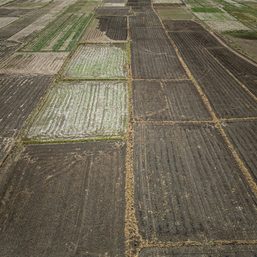SUMMARY
This is AI generated summarization, which may have errors. For context, always refer to the full article.

CAGAYAN DE ORO, Philippines – The Philippine Atmospheric, Geophysical and Astronomical Services Administration (PAGASA) said Northern Mindanao would likely start feeling the worst effects of the El Niño phenomenon more than a month from now.
The El Niño, which is characterized by below-normal or no rainfall for months, could render vast tracts of farmlands unproductive.
At least 15,000 hectares in the region currently devoted to agriculture and primarily utilized for palay, corn, and vegetable productions are vulnerable to drought, according to the Department of Agriculture (DA) in Region X.
Anthony Joseph Lucero, head of PAGASA’s Mindanao Regional Services Division, said on Wednesday, January 24, that they expect the worst conditions to be felt in Northern Mindanao between March and April.
“Below normal rainfall conditions have started January this year, but I cannot exactly say when dry spell and drought conditions would occur,” Lucero said.
He dismissed criticisms about PAGASA’s El Niño advisories, especially in light of the recent flooding in some areas of Mindanao caused by a shear line and localized thunderstorm weather conditions.
“We never said it wouldn’t rain,” he said.
The onset of the El Niño in the country was officially declared by PAGASA on July 4, 2023. But as early as March last year, increasing sea surface temperatures at the central and eastern regions of the Pacific Ocean were already observed.
Joel Rudinas, a former DA assistant secretary and current consultant at its Northern Mindanao office, said the El Niño advisories from PAGASA give them the warning signals that are valuable inputs in policy discussions, even when they interact with farmers associations.
Rudinas said they also utilized historical data which identify the southern Bukidnon and western side of Misamis Oriental as among Northern Mindanao’s most vulnerable areas to dry spells.
He said about 15,000 hectares of farmlands in Northern Mindanao that are dependent on rainwater, including those within the communal irrigation and National Irrigation Administration (NIA)-assisted water systems are likely to be affected. The provinces of Bukidnon, Camiguin, Lanao del Sur, Misamis Occidental, and Misamis Oriental compose the region.
In the 2018-2019 El Niño episode, the DA placed the damage and losses in the country at P7.96 billion, including over P293 million in Northern Mindanao. The prolonged dry spell destroyed crops planted in 277,890 hectares, affecting 247,610 farmers across the country.
Rudinas said one measure would be to advance the cropping calendar by a month for earlier harvesting. It takes 100 to 120 days for palay to be harvested, depending on its variety.
He suggested cutting losses in irrigated farmlands by reducing the planted area to match available irrigation, minimizing the impact of the dry spell.
He also encouraged farmers to register with the Philippine Crop Insurance Corporation (PCIC) for potential compensation in case of El Niño-related crop damage. However, he noted that less than seven out of 10 farmers are currently in the PCIC’s records.
For those relying on rainwater, Rudinas advised minimizing tillage by harrowing only where seeds or seedlings are to be planted. During corn harvests, he suggested leaving the stalk and leaves in place to act as mulch, reducing soil moisture evaporation. – Rappler.com
Add a comment
How does this make you feel?













There are no comments yet. Add your comment to start the conversation.